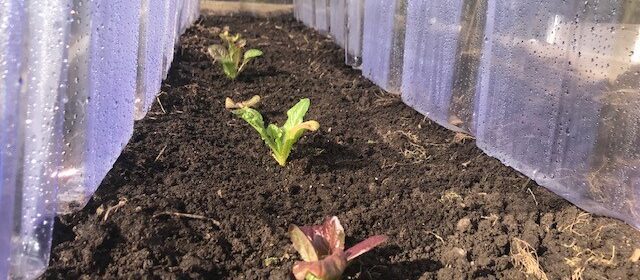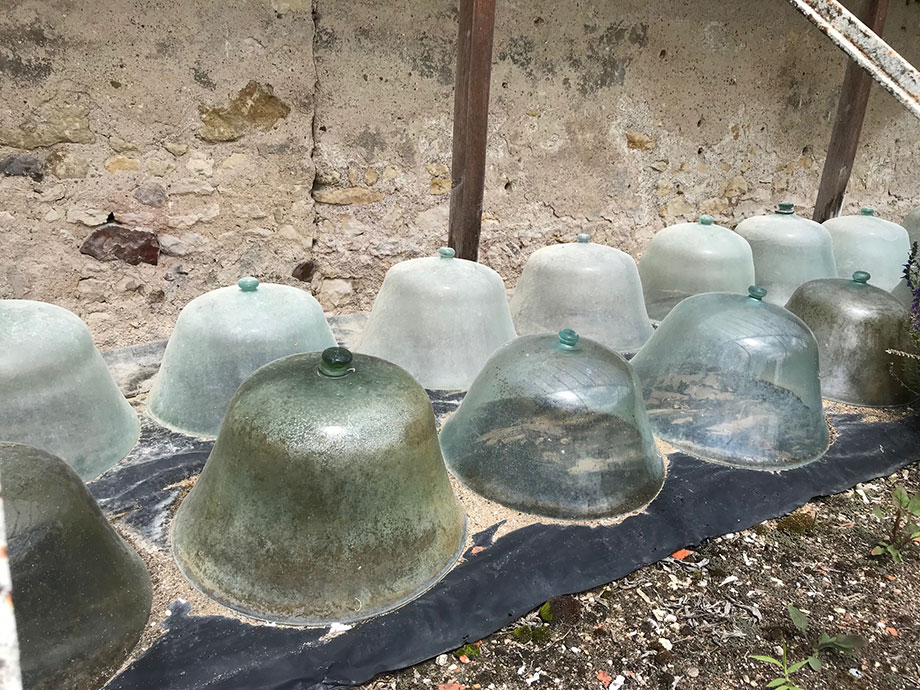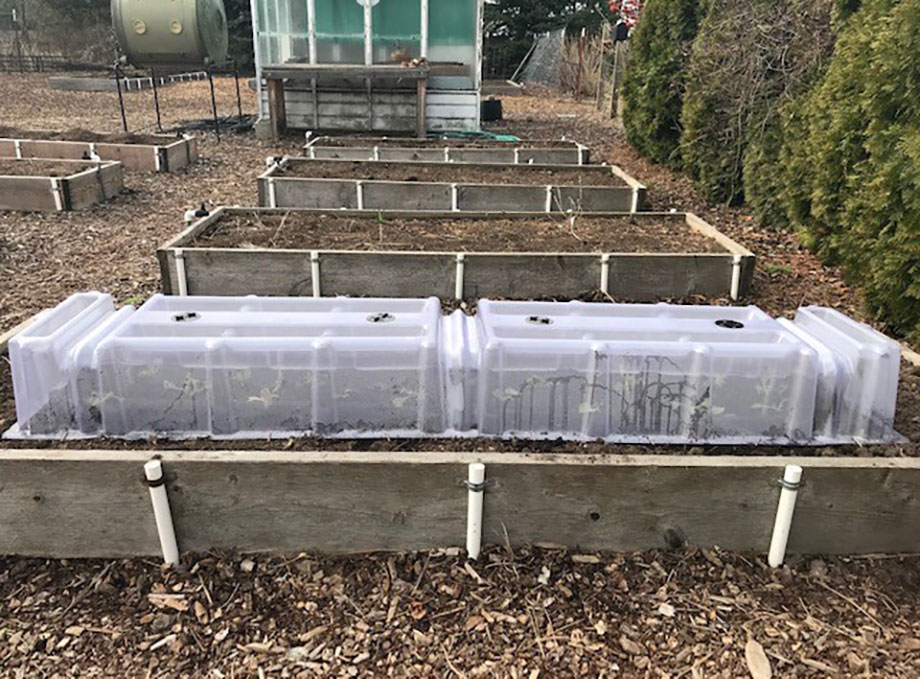March 7 Column: Starting Veggies Early


Starting veggies early is the topic for this week’s garden column and video. I’ve decided to push the envelope by planting lettuce waaaaay earlier than usual this year and, to make matters worse (although I hope not!), I am encouraging you to try this, too. Here’s the link to my column in today’s edition of The Spokesman-Review: Get a jumpstart on the garden. (you can also read the text of my column at the bottom of this post)
What does starting veggies early actually mean?
When I say “starting veggies early,” just how early am I talking about? I usually direct-sow lettuce seeds in the garden around April 10. Last year, in late March, I received a row cloche system from Gardener’s Supply, which prompted me to start seeds indoors in anticipation of receiving it. Then I planted them in the garden (under the cloche system) about 2 weeks ahead of time. I was excited about this but I knew I should try to plant them outdoors even earlier this year, to see how early I could get away with this.
To clarify, a cloche (which is French for the word “bell”) is a bell-shaped cover that you place over a plant to give it frost protection early in the season. It’s common to see old glass cloches in British and European gardens (see photo at top left) that are used for this purpose. But there are other ways to protect early plantings, as I explain both in my column and in this week’s video, and they’re quite simple.

At the end of January, I started several lettuce plants from seed. It’s important to let them develop a good root system and a few leaves before you move them out into the garden. After setting up my cloche system a few days ago — which warmed the soil — I transplanted the seedlings on March 4th. Now THAT is early! My fingers are crossed that an Arctic front doesn’t push through Spokane in the next couple of weeks!
I encourage you to try this method for starting veggies early. If you can pull it off, you will be eating fresh salad greens from your garden way earlier than usual. And if it Mother Nature pulls a fast one on you? Well, you’re just out a few lettuce seeds.
Garden column on starting veggies early:
We’re all just dying to get something planted in our vegetable gardens, right? I frequently preach the importance of being patient but I’m going to throw that out the window today. That’s because I have a project to help you get a jump on planting. Your reward will be fresh salad greens.
This year, I’m going to grow lettuce outside earlier than ever. My secret weapon is a “cloche,” which is the French word for bell. In European gardens, large glass bell-shaped covers are often used to protect plants from cold temperatures. I don’t have individual cloches but I do have a row cloche system which is a heavy-duty, clear plastic tunnel. I realize not everyone has cloches so here are two easy alternatives:
Methods for starting veggies early:
The first option involves cutting off the bottoms of one-gallon milk jugs. Keep the lids on them and place the jugs in a garden bed about 10 inches apart to begin warming the soil. If you can, push them down into the soil; otherwise, attach a board or stake to prevent them from blowing away.
The other option is to make a low tunnel over one of your beds. To do this, install a few hoops, spaced 2 feet apart, down the length of the bed. You can purchase heavy-gauge wire hoops at garden centers or make your own hoops from black poly sprinkler pipe. Home centers sell rolls of poly pipe. It might be tricky pushing each end of the hoop into the soil so consider pounding in some short lengths of rebar (steel reinforcing rods) on either side of the bed and slip the hoops over them. Lay a sheet of clear plastic over the hoops and weigh it down along the outer edges and ends. Put your low tunnel in place as soon as you can to begin pre-warming the soil.
Plant care when starting veggies early:
Last week, I suggested you start some lettuce seeds indoors. If you missed that, you’ll want to do this right away to give them a head start rather than sowing the seeds outdoors.
Once your seedlings have some true (mature) leaves, feed them with a liquid nitrogen fertilizer at half the recommended rate on the label and repeat this about 10 days later. The seedlings should be ready to go outside in about 3 weeks.
The outdoor soil temperature for planting lettuce should be at least 40 degrees F. When you are able to dig a few small planting holes in the soil of your covered bed – or beneath your milk jugs – plant the seedlings. Keep an eye on the weather forecasts. On sunny days, open the ends of the low tunnel, or remove the lids of your milk jugs, so the plants don’t fry. Be sure to close the plastic again, or replace the lids, before the sun goes down. Monitor the soil moisture and water as needed so it won’t dry out.
As soon as the plants have several leaves, start harvesting some of the leaves once or twice a week. By harvesting individual leaves instead of whole plants, they will continue producing new foliage until hot weather arrives.
Ordinarily, I plant lettuce seeds directly in the garden around April 10 but I love the idea of enjoying homegrown lettuce a lot sooner. You should be able to remove the low tunnel or milk jugs in early April since the plants will be able to tolerate the temperatures.
